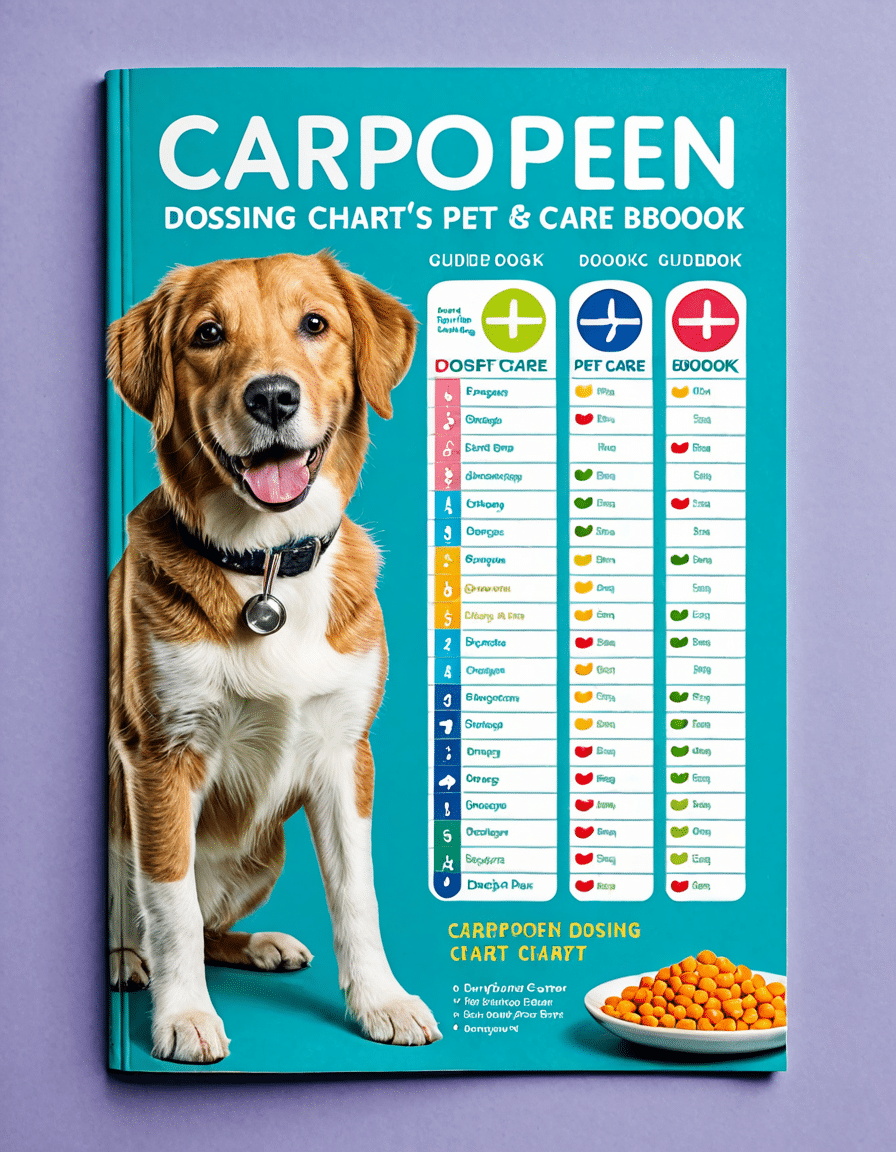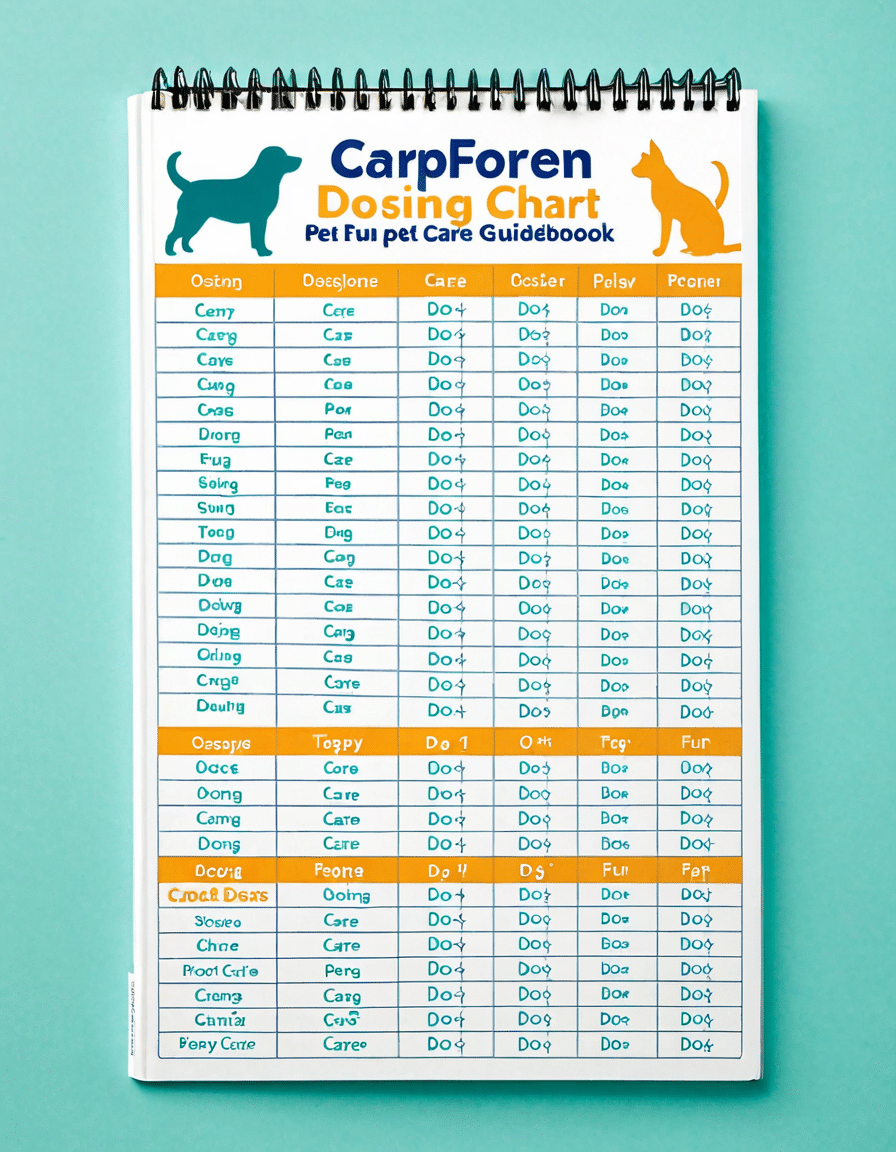Understanding the appropriate dosing for medications like Carprofen can be critical for your pet’s health, especially in managing pain relief and inflammation. This guide not only provides a detailed carprofen dosing chart but also explores how it aligns with other medications such as Drontal Plus, as well as alternative solutions like canine aspirin. Below is a structured overview to help pet owners navigate this essential topic effectively.
1. Understanding Carprofen: What You Need to Know
Before diving into the specifics of the carprofen dosing chart, it’s important to know about Carprofen itself. Carprofen, commonly known by its brand name Rimadyl, is a nonsteroidal anti-inflammatory drug (NSAID) used mainly in dogs to relieve pain associated with orthopedic conditions, surgery, or arthritis. It works by blocking certain enzymes in the body, preventing the production of substances that cause inflammation and pain.
While Carprofen is effective, it’s essential to consider potential side effects and the contexts in which it is used. For instance, the medication is typically prescribed for short-term pain relief but can be utilized long-term under a veterinarian’s guidance. Keep in mind that your dog’s age, weight, and health status can all influence how well Carprofen works for them, so regular vet check-ups are a must.
Additionally, some dogs may react differently to Carprofen. Serious side effects can occur, particularly in pets with existing health conditions, making it essential for pet owners to stay informed and work closely with their veterinarians.

2. Carprofen Dosing Chart for Dogs: Your Quick Reference Guide
Here’s a practical carprofen dosing chart for dogs. It’s vital to note that this chart provides general guidelines, and your vet should always be consulted for the most accurate dosage based on your pet’s specific health needs:
If you’re managing pain for a larger dog, they’ll often require higher doses. However, always consult your veterinarian to account for your dog’s individual health needs and condition.
3. Comparing Carprofen with Other Medications: Drontal Plus, Cytopoint, and Canine Aspirin
To make informed decisions regarding your pet’s treatment plan, comparing Carprofen with alternatives can be beneficial. For example, Drontal Plus is a commonly used dewormer that can also impact your pet’s overall well-being. Here’s a quick look at its dosing:
Drontal Plus Dosing Chart
Knowing the correct doses of other medications helps avoid potential overdoses while minimizing side effects.
Cytopoint Dosing Chart
Unlike Carprofen, Cytopoint is an injection used predominantly for allergic dermatitis, effective for managing itchiness and skin inflammation. The dosages vary based on your dog’s weight and can last for around a month:
Canine Aspirin vs. Carprofen
Canine aspirin can serve as an alternative for pain relief and may be used when blood-thinning properties are desired. While Carprofen often provides superior anti-inflammatory benefits, aspirin can be a suitable choice for different circumstances. The standard dosage for canine aspirin is about 5-10 mg per pound of body weight, generally given every 12 hours. Nevertheless, always talk to your veterinarian before making any changes.

4. Potential Side Effects of Carprofen
Even though Carprofen is considered safe for many dogs, side effects can happen. Common issues may include gastrointestinal upset, liver dysfunction, and kidney complications. Being vigilant about your dog’s behavior is crucial during treatment; kept an eye out for symptoms like:
If you notice any of these signs, contact your vet immediately. Regular check-ups can help monitor your pet’s reaction to any medications, allowing for timely adjustments, if necessary.
5. When to Consult a Veterinarian
The temptation to self-diagnose or medicate your pet can be strong, especially with online dosing charts at your fingertips, but it’s crucial to connect with your veterinarian before starting or adjusting any medication. Specific health concerns like pre-existing renal disease, liver issues, or ongoing medications can all affect how your pet should be treated.
Always remember that consulting a qualified veterinarian protects your pet from potential adverse effects and ensures they receive the safest, most effective treatment possible.
Final Considerations for Managing Pet Pain
Effectively managing your pet’s pain involves more than just correct dosing of medications like Carprofen. Integrating holistic approaches and remaining informed about your pet’s unique health needs plays a vital role.
By utilizing reliable carprofen dosing charts and maintaining an open line of communication with your veterinarian, you empower yourself as an informed pet owner. This enables you to make decisions that support your beloved companion’s health and well-being. Whether you’re dealing with standard schnauzer Puppies or a husky And similar Breeds, ensure that your pet receives the best care possible!
Make sure to share this article and bookmark it for easy reference, as being prepared can lead to better outcomes for your furry friends!
Carprofen Dosing Chart – Fun Facts & Trivia
Interesting Insights About Carprofen
Did you know that carprofen is a non-steroidal anti-inflammatory drug (NSAID) often used to relieve pain and inflammation in pets? It’s quite popular among dog owners, especially for conditions like arthritis or post-surgery recovery. But here’s a fun twist: while carprofen is widely used for pets, its origins trace back to the research of anti-inflammatory medications that were initially designed with humans in mind. It’s always amusing how animals can end up with medicines first developed for us, much like how a pied French bulldog can charm anyone with their adorable features!
Speaking of charming, ever noticed how a flying pig can evoke a smile? Just like these whimsical creatures, our pets often bring a lightheartedness to life. Carprofen can help them live more comfortably, bouncing around with energy and joy. Speaking of comfort, understanding the carprofen dosing chart is crucial because getting the dosage right is key for your pet’s well-being. Whether your furry friend might need a larger or smaller dose, knowing the specifics can keep you from dancing around unnecessary troubles—similar to how one might avoid a typewriter keyboard—nobody wants to deal with a stuck key!
Why Dosing Matters
When it comes right down to it, dosages vary based on factors like your pet’s weight, age, and overall health. It’s a bit like picking out the right Arc’teryx jacket—you want something that fits just right to ensure maximum benefit. A little knowledge about the carprofen dosing chart can help you decide if your dog needs that extra boost or if they’re just fine with the usual dose. It’s always good to keep an eye on your pet’s reactions post-treatment and adjust accordingly, much like finding the ideal fit for a Suavitel-fresh laundry day.
Now, before you think it’s all numbers and no fun, here’s another tidbit: while carprofen helps manage pain, like with Doberman Ears uncropped, aesthetics can vary, but what remains consistent is the care you give your beloved friend. So, keeping track of how they respond to the treatment can provide insights into how to tweak their care—just like personalizing their style. Always remember, understanding the carprofen dosing chart is not drudgery; it’s a pathway to enhancing the happiness of your four-legged companion.






